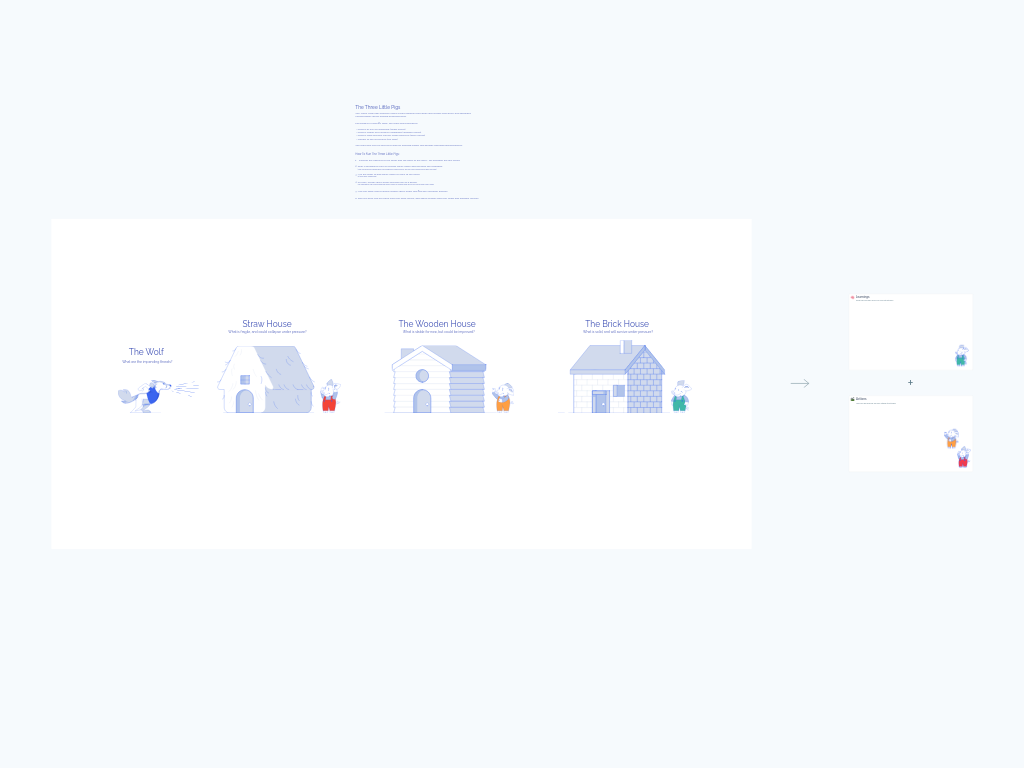Glad / Mad / Sad Retrospective
A straightforward emotional retrospective that helps teams identify what makes them feel positive, frustrated, or disappointed about recent work. This powerful yet simple format creates space for honest feedback while recognizing the human element of teamwork.
What Is a Glad / Mad / Sad Retrospective?
The Glad / Mad / Sad retrospective is a feelings-based reflection exercise that categorizes team feedback into three emotional states. This format acknowledges that work involves emotions, not just processes and tasks. By structuring discussion around emotional responses, it helps team members express their authentic experiences during a sprint, project phase, or time period.
The emotional framework makes it accessible to everyone, regardless of technical background or role, encouraging more honest and complete feedback than purely analytical retrospective formats.
Benefits & When to Use
When to use this template:
- When you want to focus on the human experience of work rather than just processes
- For teams that need to address interpersonal dynamics or emotional tensions
- When you want a simple format that new team members can easily understand
- At the end of sprints, projects, or quarters to gather comprehensive feedback
Key benefits:
- Creates psychological safety by validating emotional responses to work
- Simplifies contribution with a clear and intuitive categorization
- Balances positive recognition with critical feedback
- Helps identify both process issues and team dynamics that need attention
- Provides a structured way to turn emotional feedback into actionable improvements
How to Run a Glad / Mad / Sad Retrospective
Total time: 45-60 minutes
Set the context (5 min) Decide on a specific period or topic for discussion, such as the previous sprint, a particular project, or a work process.
Individual reflection (10 min) Ask team members to add sticky notes to each column:
- Glad: What brought you joy, satisfaction, or pride?
- Mad: What frustrated, annoyed, or angered you?
- Sad: What disappointed you or made you feel let down?
Share and discuss (20 min) Take turns reviewing each column's sticky notes. Have authors briefly explain their thoughts while others listen actively. Focus on understanding rather than problem-solving at this stage.
Tip: Click on a participant's icon in the top right to highlight their sticky notes!
Add reactions (5 min) Team members add reactions to notes they strongly agree with or find particularly important. This helps identify patterns and priorities.
Hint: Use the Reaction tool from the toolbar!
Generate actions (15 min) Based on the most significant items (especially those with many reactions), collaborate to create specific, actionable follow-up items. Assign owners and timeframes for each action.
Tips for a Successful Session
Balance the columns: If one column gets significantly more notes than others, ask probing questions to fill out the under-represented categories.
Start positive: Consider beginning the discussion with the "Glad" column to establish a constructive tone before addressing challenges.
Focus on experiences, not people: Encourage team members to describe situations and impacts rather than blaming individuals.
Create psychological safety: Acknowledge that all emotions are valid responses to work experiences. Normalize expressing both positive and negative feelings.
Warm up with gratitude: For teams with high tension, begin with a brief Kudos exercise where people thank colleagues before diving into the retrospective.
Follow up: In the next retrospective, review the previous action items first to create accountability and demonstrate the value of the process.



